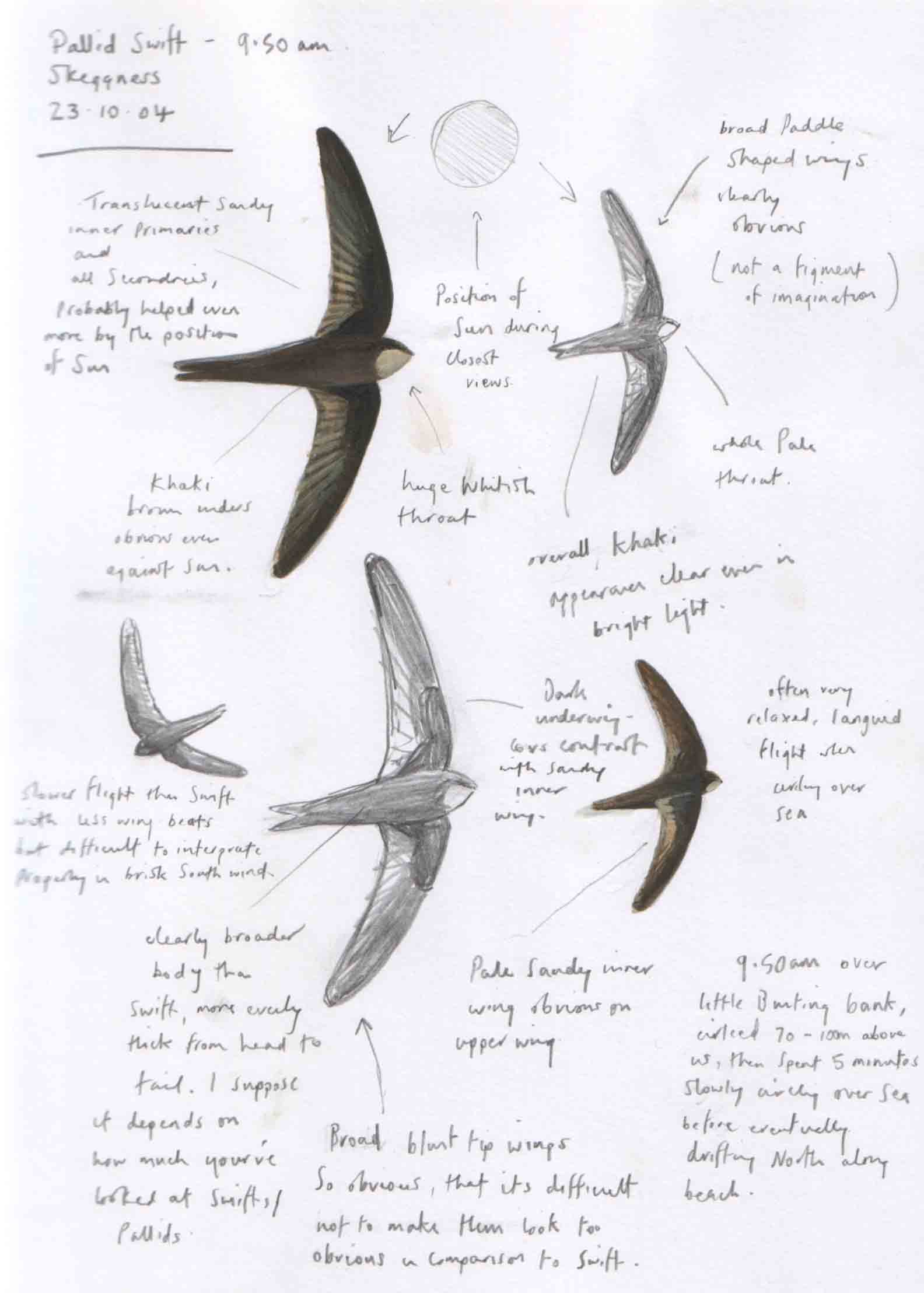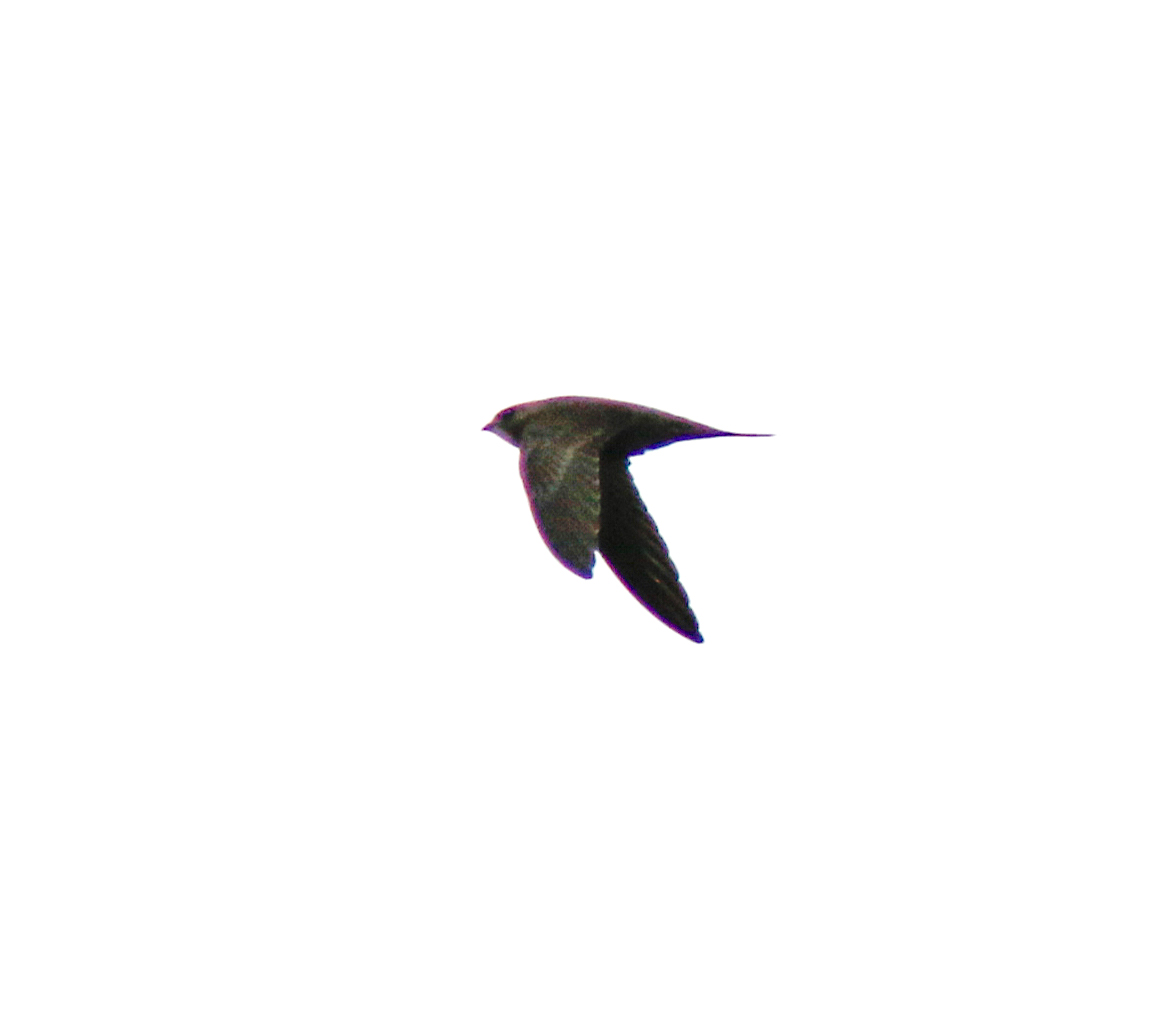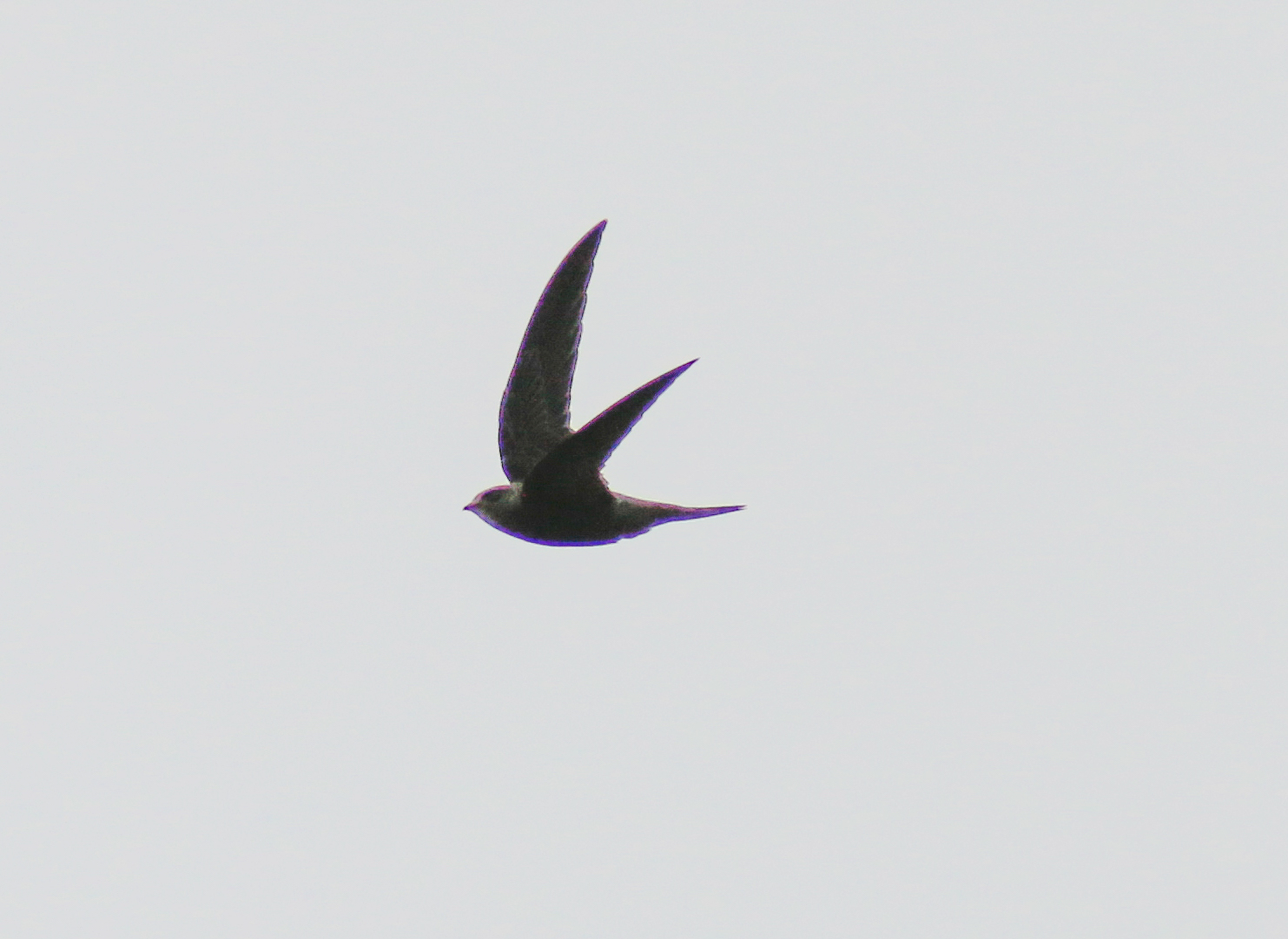Pallid Swift Apus pallidus
Vagrant. Southern Europe



Pallid Swifts: left, original sketches by John Wright, Skegness October 23rd 2004; centre and left, Goxhill Haven November 11th 2018 (Steve Routledge)
A real birders bird, finding a Pallid Swift in late autumn is literally a feather in the cap for the finders. Just four have been found in the county all between October 23rd and November 16th, all one-day birds. The first was found in October 2004 in unusually good weather conditions cruising overhead in clear blue skies at the north end of Skegness. Viewing conditions were excellent and a full and complete description was easily made. It disappeared off to the north after a few minutes leaving the three finders in a state of some elation. The second and third records didn’t arrive until 14 years later and then within days of each other. Once again, the diligence of the observers including good photographs of the third bird made BBRC acceptance a formality. The fourth was, surpisingly, the only county record in 2022 coming as it did during a UK invasion of the species when at least 57 were seen.
First recorded in Britain in 1978, three to four Pallid Swifts arrive in Britain on average each year usually associated with warm sectors of low-pressure systems in late autumn. There have been occasional ‘invasion’ years as was seen in 1999 (12), 2001 (12), 2004 (16) and 2018 (15); there have been 117 records since 1978.
| Site | First date | Last date | Count | Notes |
| North Shore GC, Skegness | 23/10/2004 | - | 1 | |
| Gibraltar Point NNR | 07/11/2018 | - | 1 | |
| Goxhill | 11/11/2018 | - | 1 | |
| Mablethorpe | 16/11/2022 | - | 1 | Flew S along the dune top at 13.40h. |
| Gibraltar Point* | 29/10/2023 | - | 1 | Present 07.20-10.20. |
| Far Ings NR* | 29/10/2023 | - | 2 | Present early- to late-afternoon, 16.15hr at least, then drifted away west. |
| Huttoft Bank* | 29/10/2023 | - | 2 | Present mid- to late-afternoon. |
| Donna Nook NNR | 04/11/2024 | - | 1 |
Finder’s report: Pallid Swift at Skegness, October 23rd, 2004, first county record.
by D. Jenkins, K. Durose and J. Wright
Note: this account is taken from the account in the Lincolnshire Rare & Scarce Bird Report 2003-2007 and the original Rarities Committee submission. There were at least six confirmed British records in 2004 bringing the total at that time to 55. As BBRC noted in their 2004 report, suspecting that you have found a Pallid Swift is one thing; proving it is quite another, as the differences from Common Swift A. apus are subtle, dependent on variation in light, and exceptionally difficult to convey in a description. When the first records occurred 20-30 years ago, it was essential to prove that any putative autumn Pallid was not a late Common Swift. The surge in October and November records, with 12 in both 1999 and 2001, has enabled observers to familiarise themselves with Pallid, and just how variable it can appear in both plumage tone and in structure. Although Pallids tend to occur in the late autumn, it should not be assumed that any late swift is a Pallid until proved otherwise.
Circumstances
Found while watching a Little Bunting that JW and KD had found earlier in the week. A few days previously there had been around 10 reports of Pallid Swifts in England and we felt pretty confident of finding one. At 09.50 hr. I (JW) casually mentioned to the other two to keep looking up for Swifts and five seconds later DJ picked up a Swift sp. flying straight towards us along the beach! It then circled right above us, 70-100m high, momentarily disappearing into the sun before slowly circling over the sea before eventually drifting north along the beach. The whole observation lasted five minutes. The weather at the time was settled, fine and sunny with light winds.
JW's excellent artwork of the bird appears at the top of this page.
Description
Size – same size as Common Swift, rather bull-necked and large-headed. Best structural difference was the wing shape, being broader, particularly at the base and obviously blunt-tipped.
Plumage – even at a good distance this bird looked palish brown with good contrasting wings, mainly pale, translucent secondaries and inner primaries contrasting with the dark leading edge of the wing and outer primaries. Underwing dark blackish-brown also contrasted with paler secondaries as well.
Underside was distinctly scaley and milky or khaki brown, depending on the light and with a large white throat patch clearly visible. This contrasted with a dark smudge through the eye. Upperparts not seen quite as well as the bird was directly overhead, but did appear to be contrasting, with a dark ‘saddle’ becoming slightly paler on the rump and tail.
Bare parts – bill and eyes dark, leg colour not seen.
Behaviour – flight not as dashing as a Common Swift with no high speed manoeuvres. In fact, was feeding lie a House Martin, fluttering upwards six or so feet then dropping downwards again, gliding, then repeating this over and over. The bird drifted northwards towards Ingoldmells Point along the beach repeating this behaviour. JW remarked that the one thing that he found amazing about Pallid Swifts is the way that their appearance can change. In one view they can appear strikingly obvious but 10 seconds later the same bird can appear less convincing, and your confidence takes a pounding! We were fortunate that our bird performed well in the short time that it was present.
Reference
(Account as per new Birds of Lincolnshire (2021), included September 2022)

